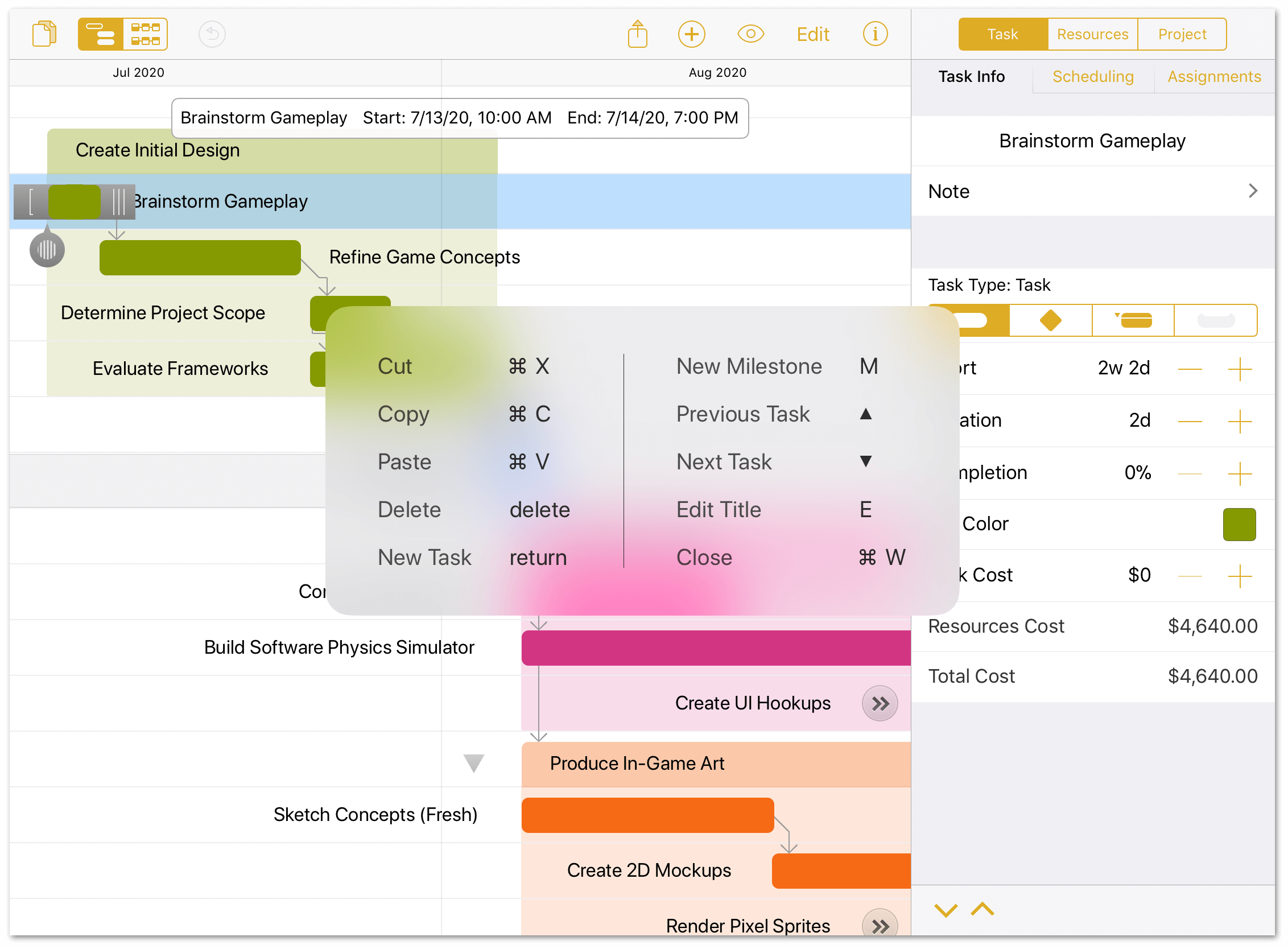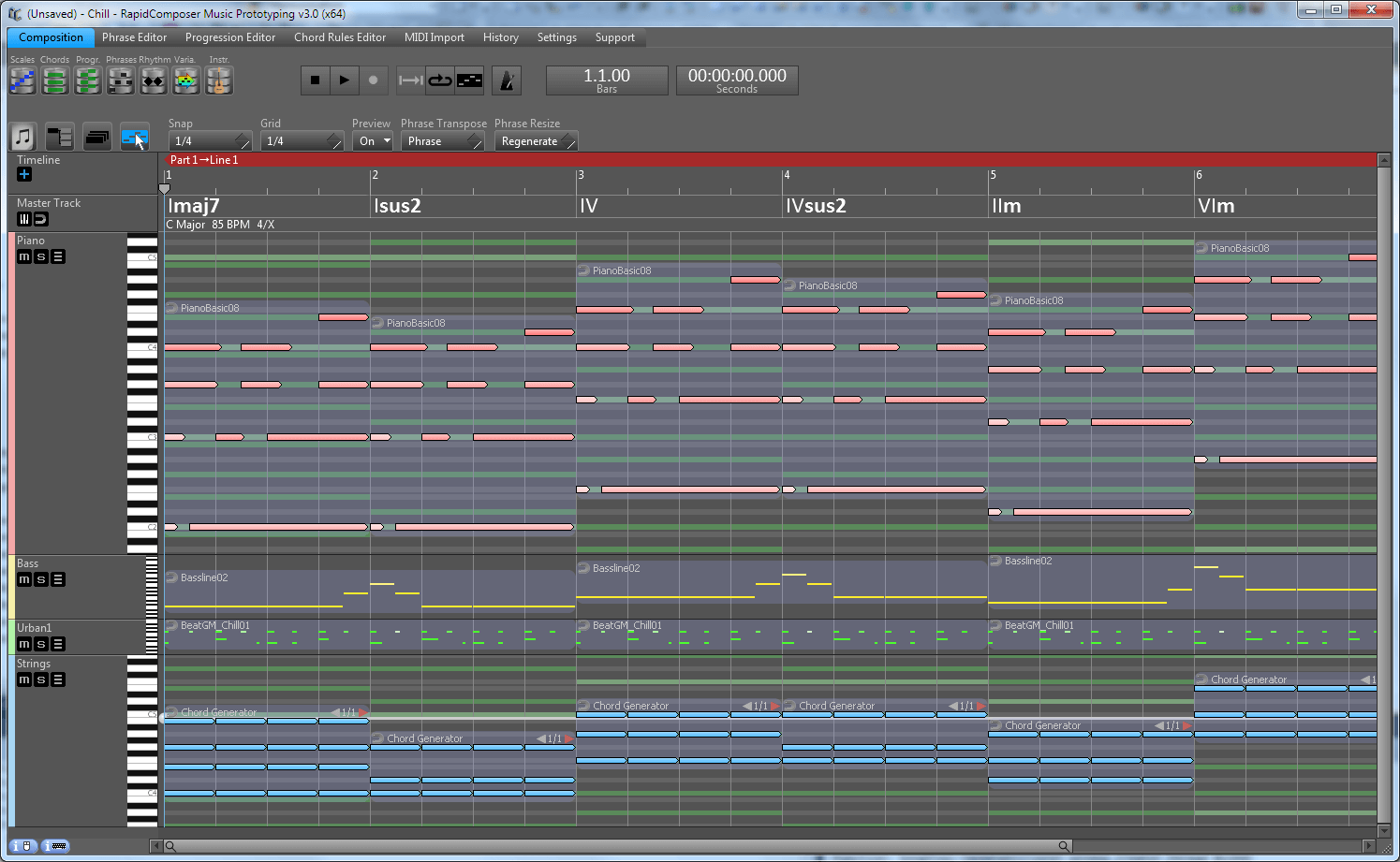

- #Rapidcomposer 3 shortcuts manual#
- #Rapidcomposer 3 shortcuts pro#
- #Rapidcomposer 3 shortcuts plus#
- #Rapidcomposer 3 shortcuts mac#
- #Rapidcomposer 3 shortcuts windows#
Separate note events are summarized in a so-called phrase, several phrases are organized in so-called parts (e.g. 2.5 The Note Event > Phrase > Part > Composition Hierarchy The other note types are "relative events" that change dynamically according to the specifications in the master track (see chapter 7). Only the MIDI notes of the type "Absolute Note" remain unchanged as known from conventional MIDI sequencers. MIDI note events in RC, on the other hand, have one of the following additional properties (see also Chapter 5): They can be changed with the mouse as desired (add, delete, shorten, cut, etc.). This information is visible in the main window of the program in the form of longer and shorter markers (note events) in the time grid. The MIDI note events in a conventional sequencer usually consist of the following individual information:
#Rapidcomposer 3 shortcuts pro#
Logic Pro X 2.4 Special Additional Properties of MIDI Note Events in RC The chord ruler (master track) is a significant feature that distinguishes the RC from conventional sequencers. The various instruments are arranged in a timeline, there are buttons for transport (playback), the MIDI note events are sorted by instrument and displayed in a time grid (piano roll). If, contrary to expectations, the loudspeakers remain muted, the MIDI settings must be checked again (Settings > MIDI).Īt first glance, RC presents itself as a midi sequencer. Normally there should be something to hear immediately, since the basic settings are made automatically during installation. Start playback (play button in the transport field, alternatively: the space key).2.3 Short function test 2.3.1 Loading and Playing a Template In addition to the color options selectable in the program, many more are also available online: user interface themes in the RC user forum. For this tutorial, "OSY " was selected with two additional color settings (Settings > User Interface > Colors). 2.2 Selecting a Interface Color Schemeĭepending on the screen and taste, different coloured interfaces are available under "Settings > User Interface > Theme". Customizable interface: The user interface and keyboard shortcuts can be fully customized. Use chords for tracks, phrases, or master tracks. Use the chord buttons, regular notes or key. Unfortunately, on the Mac, important mouse or trackpad gestures such as horizontal scrolling or zooming are not supported. Flexible Chord Selection: RapidComposer offers several ways to select chords for the main track or progression. In addition, it makes sense to learn a number of important keyboard shortcuts for particular workflows.

via the so-called Inspectors or Browsers. Note: Many important functions are not accessible from menus but only from a number of non-modal dialog boxes, e.g. This version finally offers the long awaited AU integration) (Update: Version 4.0 was released in December 2020. So far, the program can only be used under MacOS in the standalone version without any further paid utilities (VST-AU wrapper).
#Rapidcomposer 3 shortcuts mac#
AU integration on the Mac is announced, but not yet complete.
#Rapidcomposer 3 shortcuts windows#
The Windows version of Rapid Composer can easily be used as a plug-in in other DAWs via VST. Under Windows there are other combinations due to the missing command key (see Settings > Keyboard Shortcuts). All key commands presented here also refer to Apple systems. The examples, videos and screenshots presented here were created with the Mac version.

The user interface looks almost the same on both systems. Rapid Composer is available for MacOS as well as for Windows (64bit each).
#Rapidcomposer 3 shortcuts manual#
Using the Narrator volume command above as an example, Narrator + Ctrl + equal (=) is the literal command, not Narrator + Ctrl + Shift + equal (=).Rapid Composer: The Missing Manual 2.

#Rapidcomposer 3 shortcuts plus#
Unless explicitly called out, it isn’t necessary to include Shift before the equal key to make it the plus sign as you would when typing the plus sign. Note: The commands that include plus (+) and minus (-) refer to the physical key and don’t require Shift as a modifier. Commands for each are listed below. For the scan mode commands, go to Chapter 3: Using scan mode. Narrator has two possible keyboard layouts: Standard and Legacy. Note: If you’re using a Japanese 106 keyboard, Insert and NonConvert are your default Narrator keys. You can change your Narrator key in Narrator settings. The Narrator key is referred to as simply “Narrator” in commands. You can use either of these keys in any command that uses the Narrator key. Both the Caps lock and Insert keys serve as your Narrator key by default. You can choose what modifier key you want to use in Narrator commands. To view a list of keyboard shortcuts in Windows apps, see Keyboard shortcuts in apps. To view a list of all other keyboard shortcuts in Windows, see Keyboard shortcuts in Windows. This appendix lists the keyboard commands and touch gestures available in the latest version of Windows.


 0 kommentar(er)
0 kommentar(er)
